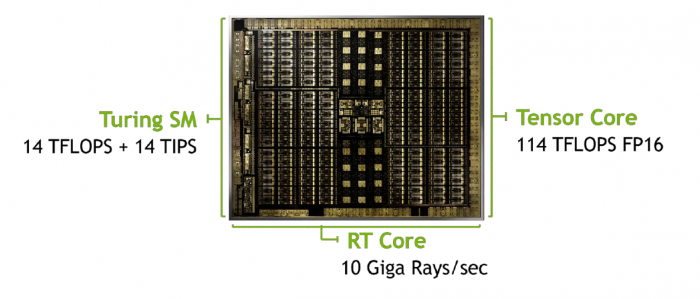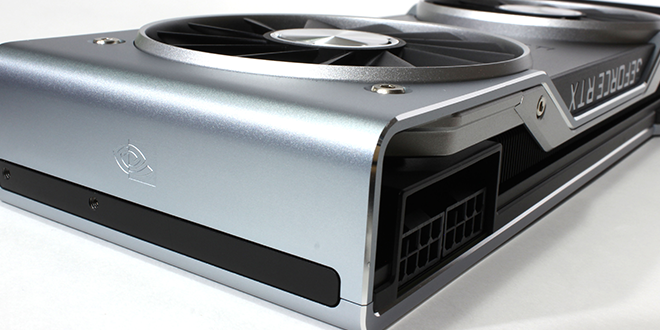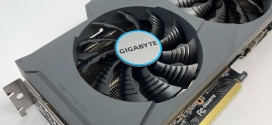New Turing GPU Architecture (TU-102)
Here we will take a look at some snippets from the Nvidia provided documentation and add our own responses where we feel necessary to best explain our understanding as to how these new features can help you. Company PR information will be in Italics so you can differentiate it from the information we are delivering.

The new Turing core is nothing short of badass. When you look at it on paper it more closely mirrors a professional series GPU or compute die rather than it does a standard consumer grade gaming GPU as we have come to know them. Turing has a completely new SM (Streaming Multiprocessor) which deploys many new shading technologies including but not limited to:
- Mesh Shading
offering efficiency gains by moving the normally CPU heavy object list processing to the much more efficient parallel GPU mesh shading. This enables new forms of LOD along with better management of vertex, tesselation and geometry shading.
- Variable Rate Shading (VRS)
VRS is a very potent tool as it now allows developers to adjust shading from as little as once per 16 pixels to as much as 8 times per pixel depending on the need and if the shading would result in any visible quality changes. This means that shading could be more efficient by not wasting time working on pixels that are not necessary, hence more GPU power to assign to pumping out frames. there are many types of VRS including one which has gotten some attention in the VR space by utilizing eye position to shade areas where you are focusing called Foveated Rendering.
- Texture space shading
This method allows a texture space to be assigned to a shaded object which can be stored in memory and therefore when texture work is needed to be done it can be pulled to reference which will in terms lighten the overall shader load by evaluating work that is already done and extrapolating a proper result with less heavy lifting.
- Multi-View Rendering (MVR)
This is a step past what we saw with Pascal and the SPS or Single Pass Stereo which on Pascal allowed rendering of two views that shared same Y and Z axis but were at an X offset. MVR allows for multiple different views to be rendered in a single pass even if they are based on completely different origins.
 Bjorn3D.com Bjorn3d.com – Satisfying Your Daily Tech Cravings Since 1996
Bjorn3D.com Bjorn3d.com – Satisfying Your Daily Tech Cravings Since 1996









Two years later a new generation card should deliver around the performance the 2080ti does however the price is also expected to stay equal or less than the card it replaces. This is where the 2080ti fails big time and it’s sad to see reviewers ignore the fact. All serious reviewers should ignore nvidia marketing and compare the cards to similarly priced previous gen cards. So 1080 to 2060, 1080 to 2070 and 1080ti to 2080.
I agree, if this was a direct comparison as in Rasterization to Rasterization that would be 100% true and this review would be much different. However, as in life, things are much different and it has nothing to do with Nvidia’s marketing but more to do with having a long view on the direction of the industry. There is a lot at work which will come around as this all matures and new features really get to be explored. Thank you for the comment and for giving it a read as I always welcome constructive feedback. That being said, I would definitely revisit not just my review but others as the new features change the way you can render in-game scenes and opens the doors to next level performance differences along with massively more immersion with what the new real-time ray tracing capabilities start to show up.
I do agree that the new tech will change how rendering is done, in a GPU generation or two as it is the right way forward. But the 2080 and 2080ti cards simply do not currently deliver the value for anyone but developers that need to work on this for 1-3 years before it hits the market for real.
A card should be reviewed from a ‘consumer’ perspective. The consumer here being the gamer not a developer. Any existing consumer with a 1080ti looking to upgrade would be considering to spend around the same as amount for a new card. So his upgrade here is the 2080.. The 2080 does not currently provide the usual generational performance increase and is therefore close to worthless as a upgrade. If the consumer was willing to spend $1200 his existing card would most likely be a Titan X.
So from this perspective the 2080 upgrade is turing and rtx cores and they are not supported in DX12 yet (with luck it comes in October), furthermore there are no games currently available.
So all in all you are buying something that might work but most indications point to RTX forcing you to go from 4k -> 1080p on a 2080TI and the 2080 will probably not do well at all. This leaves DLSS as the only real gain.
Now if NVIDIA has launched this without marketing bullshit trying to sell a titan as a TI I would have no issues because people know what they are buying and all reviews would be done correctly comparing apples to apples instead of apples to oranges.
So the conclusion for now is that the 2080 card probably only provides DLSS as a improvement over a TI for a higher price as the RTX cores most likely wont be able to render in a usable resolution for guys doing 4k or 144hz gaming .
Furthermore I would expect the 2080 FE (factory overclocked card) to be compared to a equally overclocked 1080 TI.
Any conclusion that skips these obvious issues are hard to take serious.
Very well said Reviewers are missing this very important point: nvidia is ripping us off with this outrageous prices
This is not true, as in any market the tech will go for what the market will bear. If you are not happy with the prices, you have no requirement to make a purchase or even buy when a model which meets your expectations show up. I have no skin in this game as far as what Nvidia sells their product for, of course as a consumer I would love to see it for 500 or even 99 bucks but the amount of research and time that goes into these products it is simply not feasible.
Same goes for any tech product… Try telling Tesla their products (cars) are overpriced.. Many feel that way and they choose not to purchase them, but knowing what I know about them, same as I know about this tech I would buy one if I could… today…
IF this were true I would definitely agree. but we have seen games which are in process of adding these features now.. many games which already exist and more are gonna be added to this list soon I am sure. I would definitely agree once again if this was some far off tech, but it’s simply not. This is tech we will see implemented within the next few quarters is what I am seeing.